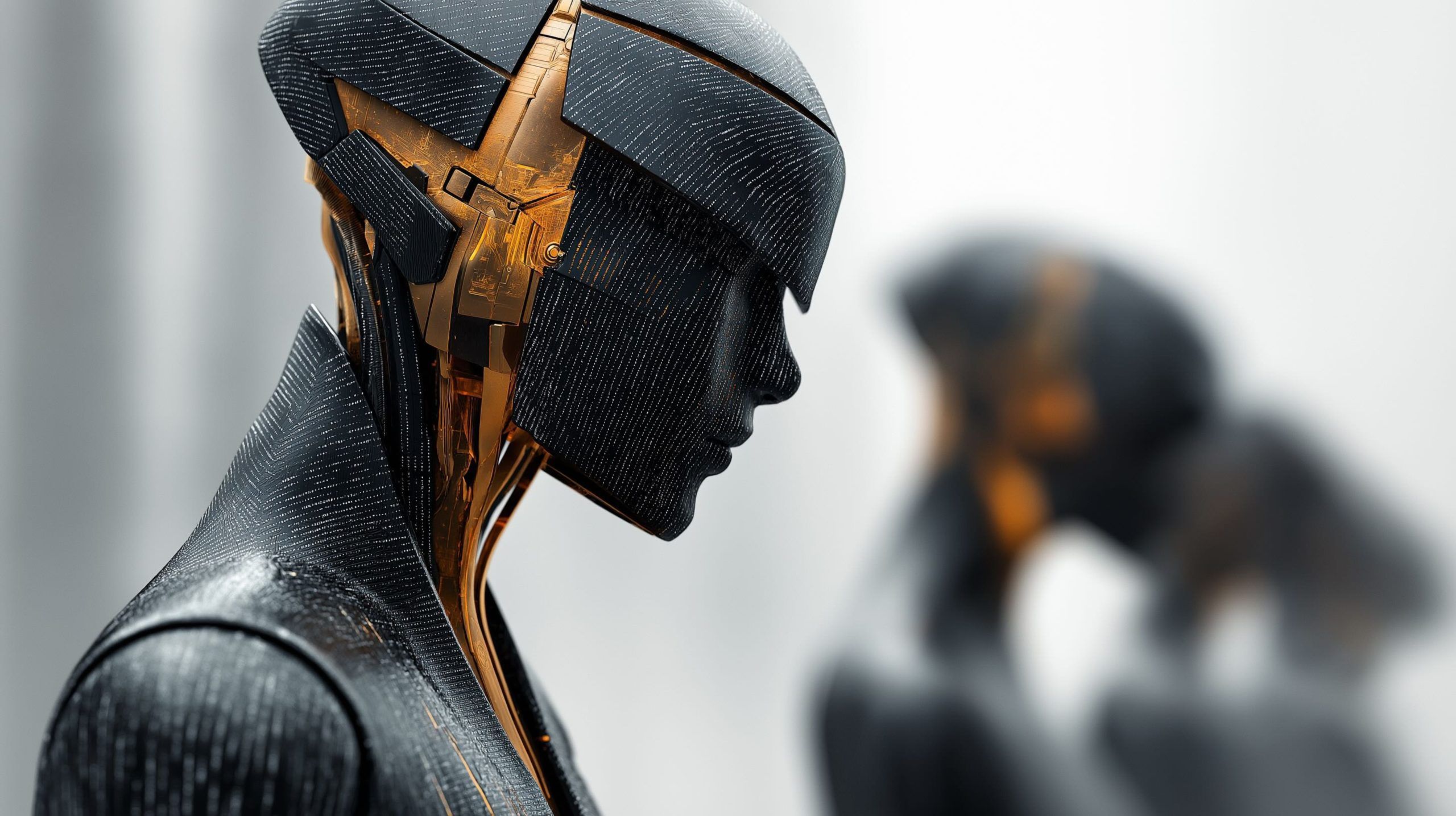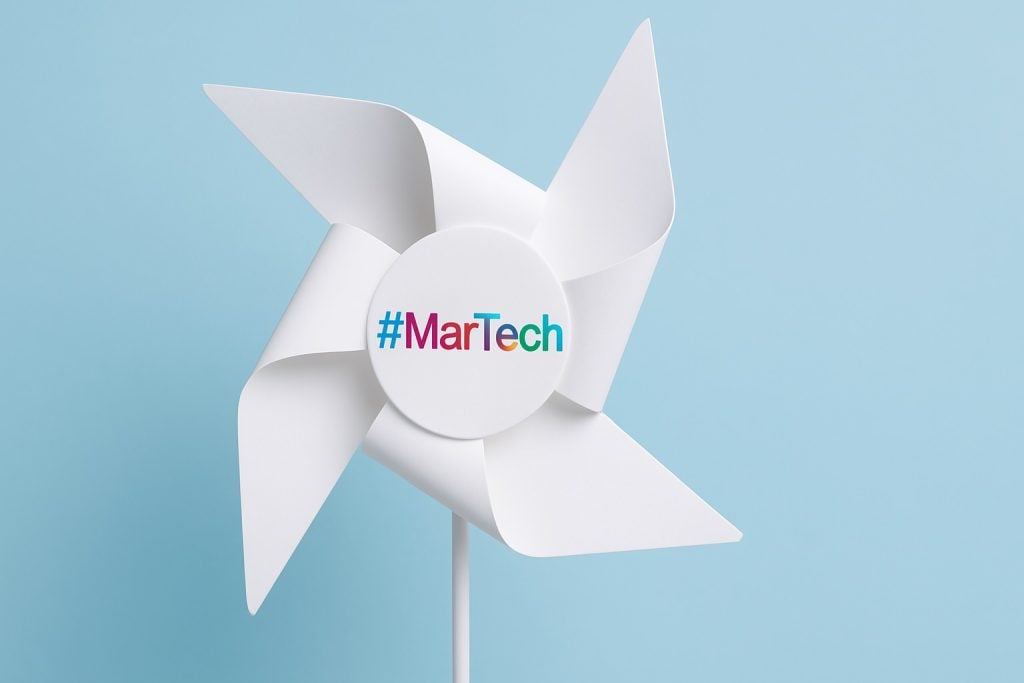- OpenAI’s GPT-5 is planned as a unified generalist AI that combines advanced reasoning with image and audio understanding, with a debut target in summer 2025.
- Google’s Stitch, unveiled at Google I/O 2025, is an AI design assistant that can generate high-fidelity UI designs and front-end code from text descriptions or image prompts, though it remains a prototype.
- Google’s Gemini Project includes an Agent Mode that will autonomously pursue user goals, such as booking a trip, in experimental form.
- Unveiled in mid-2025, AlphaGenome is Google’s DNA-sequence model capable of predicting gene regulation effects and is in a scientist preview with broader release planned.
- Google DeepMind’s Gemini Robotics On-Device runs a general vision-language-action model on hardware to give robots greater dexterity, but it is currently in a demo phase.
- Meta’s Voicebox can clone a voice from a 2-second sample and produce speech in multiple languages, but the company has kept it private due to deepfake misuse risks even as it offers voice-customization potential.
- Meta is pursuing the LLaMA series and developing AI-optimized chips to train models more efficiently, with reports of a new LLaMA 3 or 4 in planning and patent activity around hardware.
- Amazon’s Alexa+ will integrate a Claude-based conversational model and voice ID to recognize household speakers and personalize responses, with rollout targeted for 2025 and more than 1,000 generative AI services in progress.
- Apple is quietly building AI around a codenamed Ajax framework and an internal chatbot nicknamed “Apple GPT,” spending over $4 billion on AI servers in 2024 and introducing an on-device “Apple Intelligence” initiative announced at WWDC 2024, plus an internal Ask assistant for AppleCare.
- Harvard Medical School researchers introduced TxGNN, a graph neural network that identified drug candidates for over 17,000 rare diseases and performed about 50% better than prior models.
The Race to Build Unreleased AI Tools
Major tech companies and research labs are racing to develop the next generation of artificial intelligence tools – many still in development and not yet available to the public. From internal chatbots and multimodal models to cutting-edge healthcare AIs, these unreleased systems promise to transform industries if and when they launch. Companies are teasing details through patents, research papers, and interviews, offering a glimpse into AI’s near future. Below, we expose some of the most intriguing AI projects under development, and what leaders are saying about them, followed by visionary AI tools that should exist next based on emerging needs.
OpenAI’s GPT-5: One AI to Rule Them All
OpenAI is hard at work on its next flagship model, tentatively called GPT-5, which CEO Sam Altman suggests could arrive in 2025 [1]. Unlike current offerings that use separate models for reasoning (“O-series”) and for multimodal understanding, OpenAI plans to unify these breakthroughs in a single system [2] [3]. “We’re truly excited to not just make a new great frontier model, we’re also going to unify our two series,” said Romain Huet, OpenAI’s Head of Developer Experience [4]. Internal posts indicate GPT-5 is meant to “make everything our models can currently do better, with less model switching” [5]. In other words, GPT-5 would combine advanced logic/reasoning with image and audio understanding in one AI – a potentially game-changing “generalist” AI tool. OpenAI has kept technical details under wraps, but industry chatter (and a recent OpenAI podcast) suggest a summer 2025 target for GPT-5’s debut [6]. If delivered as promised, this unified model could simplify the developer experience and vastly improve AI assistants’ consistency across tasks.
Google’s Pipeline: From AI Design to Genomics
Google’s AI research arm (including DeepMind) has a crowded pipeline of experimental AI tools announced but not fully released. At Google I/O 2025, the company showcased “Stitch,” a new AI-powered design assistant that can generate high-fidelity user interface designs and front-end code from a simple text description or image prompt [7] [8]. Stitch wowed observers by translating natural language (e.g. “a travel app home screen with a search bar and city images”) into working UI layouts – but it’s still in prototype phase. Google also revealed Project Gemini updates: an Agent Mode that will let their Gemini AI act autonomously on a user’s goal (e.g. booking a trip) is “coming soon” in experimental form [9] [10]. Another Google project under development is AlphaGenome, an AI model for genomic research. Unveiled in mid-2025, AlphaGenome is a powerful DNA-sequence model that can predict gene regulation effects – with Google making it available in preview for scientists while “plans to release the model in the future” [11] [12]. In robotics, Google DeepMind has built Gemini Robotics On-Device, an advanced vision-language-action model that gives robots greater dexterity and “common sense” about the physical world [13]. This too remains in a demo stage, showing how a general model can run efficiently on a robot to perform varied tasks. “It shows how to equip robots with strong general-purpose dexterity and task generalization,” Google researchers explained of the on-device AI [14]. From AI that designs software to AI that analyzes genomes, Google’s unreleased tools indicate how broadly the company is investing in next-gen AI. Many of these will roll out gradually via Google’s cloud and developer previews, hinting at powerful new capabilities on the horizon.
Meta’s Ambitious AI: Voice Cloning and More
Meta (Facebook’s parent) has been comparatively secretive, but one striking project came to light in 2023: an AI model called Voicebox that can clone anyone’s voice from just a 2-second sample [15]. Voicebox is a generative speech tool capable of producing highly realistic audio in multiple languages and styles. Meta’s researchers touted it as a breakthrough for creating lifelike voices – so much so that they deemed it too dangerous to release publicly due to deepfake misuse risks [16] [17]. Citing the “risk of misuse,” Meta is not publicly releasing the model or code [18], even though internally Voicebox demonstrated it outperforming other text-to-speech models by a wide margin [19]. Instead, Meta published research and proposed embedding “watermark” fingerprints in generated audio to detect fakes [20]. The company did highlight positive uses: custom AI voices for those who lost speech, more natural dialog for voice assistants or game characters, and cross-lingual voice translation (speaking any language in your own voice) [21] [22]. Beyond Voicebox, Meta is reportedly investing heavily in next-generation large language models (the LLaMA series) to rival OpenAI. Recent reports say Meta hired top AI researchers and plans a new model aiming at GPT-4 level capabilities, potentially LLaMA 3 or 4, though details are mostly rumor [23]. Patents also suggest Meta is developing AI-optimized chip architectures to train models more efficiently [24]. While Meta’s consumer AI offerings have lagged (e.g. no public ChatGPT-style bot yet), these under-wraps projects signal the company’s ambition to leapfrog in generative AI – albeit with caution on what it releases.
Amazon’s Generative Alexa and 1,000 AI Projects
E-commerce giant Amazon is infusing AI across its product lines, and one centerpiece in development is a revamped Alexa digital assistant. Internally dubbed “Alexa+”, the next-gen assistant is “meaningfully smarter, more capable” and the first that can take significant actions for users rather than just answer questions [25]. Amazon CEO Andy Jassy revealed that Alexa’s upcoming upgrade will embed a powerful conversational model (via a partnership with Anthropic’s Claude) to make Alexa far more intelligent and personalized [26]. A patent filing shows Amazon has developed voice ID technology so Alexa can recognize who is speaking and tailor responses accordingly [27] [28] – for example, distinguishing a child’s voice from a parent’s and restricting certain content. “If it can differentiate between a household of different people, that’s very attractive,” noted one tech analyst, as it could enable personalized profiles and secure transactions by voice [29] [30]. However, Amazon has faced roadblocks in getting this generative AI Alexa to market, delaying a broad rollout until 2025 due to slow response times and other kinks [31]. Beyond Alexa, Amazon has a vast array of AI efforts under way. Jassy disclosed that the company now has “over 1,000 generative AI services and applications in progress or built,” calling it “a small fraction of what we will ultimately build.” [32] [33] From AI-powered shopping features to supply chain optimizations, many of these tools are still internal. But Amazon’s scale (and $10+ billion investment in AI startups like Anthropic) suggests many more AI innovations – voice agents, coding assistants, logistics optimizers – are simmering behind closed doors, awaiting release.
Apple’s Secret AI Experiments
While quieter than its Big Tech peers, Apple is also developing AI tools under the radar. Reporting in 2024 revealed Apple’s team led by AI chief John Giannandrea has been working on a large language model framework called “Ajax” and even testing an internal chatbot some engineers cheekily call “Apple GPT” [34] [35]. Apple has not decided how to deploy a consumer-facing generative AI – there’s “no clear strategy” yet [36] – but it has invested heavily (reportedly over $4 billion on AI servers in 2024 alone [37]) to catch up in the AI race. One concrete application has been a tool for Apple’s own support staff: a ChatGPT-like assistant codenamed “Ask” for AppleCare advisors. In a pilot, Apple’s support agents use Ask to instantly retrieve technical answers and troubleshooting steps from Apple’s internal knowledge base [38]. By all accounts, this generative AI helper has sped up customer support responses and ensured consistency in the info given. Apple is also believed to be exploring AI-generated features in Siri, though retooling the voice assistant’s legacy architecture is challenging and may not surface until iOS 18 or later [39] [40]. Another area of Apple’s AI development is on-device intelligence: at WWDC 2024, Apple announced an “Apple Intelligence” initiative to bake local AI capabilities into iPhones (leveraging the Neural Engine). This includes privacy-focused on-device models for text generation, image understanding, and personal context – which could power features like auto-writing texts or smart image search in Photos [41] [42]. In short, Apple’s style is to quietly build AI into its ecosystem rather than release a flashy chatbot. But behind the scenes, it is assembling foundation models and tools that, once mature and safe, could be woven into every Apple device to enhance user experiences in a characteristically privacy-conscious way.
AI in the Labs: Health and Science Breakthroughs
Some of the most exciting AI tools under development are coming from research labs and academia. For example, scientists at Harvard Medical School recently developed TxGNN, a graph neural network AI designed to discover treatments for rare diseases [43] [44]. This tool sifted through genetics, biomedical literature, and clinical data to suggest potential drug candidates for over 17,000 rare and neglected diseases [45] [46] – a task that was nearly impossible manually. “People have tended to rely on luck and serendipity [in drug repurposing]… which limits discovery,” says Dr. Marinka Zitnik, the lead researcher, whereas an AI system can systematically identify new uses for existing drugs [47] [48]. TxGNN is not a commercial product yet, but with its promising results (50% better than previous models at finding viable treatments [49]), the team has made it freely available to researchers in hopes of accelerating drug development [50]. In another domain, IBM researchers are tackling AI’s fairness issues before deployment. IBM filed a patent for an “online fairness monitoring” system that continuously checks a lending AI’s decisions for bias [51] [52]. The system would detect if a credit model starts unfairly skewing against protected groups (like by race or gender) and automatically correct its decision thresholds to maintain equity [53] [54]. Such a tool is still in patent-pending stages, but highlights the kind of guardrails being built alongside AI. Many universities and startups are similarly prototyping AI tools – from advanced climate prediction models to creative AI for art and music – that have not yet hit the market but show tremendous potential as they mature.
AI Tools That Should Exist Next
Even as these cutting-edge projects move toward reality, there are still critical gaps waiting to be filled by AI. Experts note that AI could help solve pressing unmet needs across healthcare, education, finance, creative industries, public safety and more – if only the right tools were developed. Below we propose a set of innovative AI tools that don’t exist yet but should, based on emerging needs and trends. Each of these hypothetical tools addresses a current gap, leveraging the state-of-the-art in AI to augment human capabilities.
- AI Clinical Companion (Healthcare): A virtual medical assistant that can serve as a “co-pilot” for doctors and nurses, helping monitor patients and triage routine cases. Healthcare systems around the world face severe staff shortages – the WHO projects a shortfall of 10 million health workers by 2030 [55] [56]. An AI Clinical Companion could help bridge this gap [57] by taking over time-consuming tasks like reviewing symptoms, updating charts, and even suggesting preliminary diagnoses or treatment options for common ailments. Current AI in healthcare is often limited to narrow tasks (like reading x-rays); a comprehensive companion, integrated with hospital databases and personalized to each patient, could vastly improve efficiency. It would continuously learn from medical literature and a patient’s history, alerting human clinicians to potential issues early. Of course, such an AI must be rigorously validated for safety and fairness – but done right, it could extend care to underserved areas and reduce burnout on medical staff. With an aging global population and rising chronic diseases, this tool could be transformational in delivering timely care. As one healthcare report noted, AI has the potential to “ensure timely and quality care, even in the face of a shortage of healthcare workers.” [58]
- Personalized AI Tutor for Every Student (Education): An AI-powered tutor that provides one-on-one instruction tailored to each student’s learning style and pace. Educators have long dreamed of individualized tutoring for all – something only the wealthy could afford. AI might finally make this possible. Microsoft co-founder Bill Gates predicts that within a couple of years, “AI will be as good a tutor as any human ever could,” able to give feedback on writing and even help with math [59] [60]. Such a tutor could adapt exercises in real-time, identify a learner’s weaknesses, and keep them engaged with interactive lessons spanning text, images, and even virtual experiments. Notably, it could level the playing field for students who can’t access human tutors. Gates noted most students today “can’t afford one-on-one private tutoring”, but technology can fill that gap in equity [61] [62]. Early forays like Khan Academy’s fine-tuned AI tutor have shown promise, but a more advanced system could follow a child through K-12, working alongside teachers. It might use large language models (aligned to curriculum and values) to converse naturally with students, answering questions 24/7. With proper guardrails and teacher oversight, a personal AI tutor could boost learning outcomes everywhere – fulfilling AI’s potential as “a means for equity” in education [63] [64].
- AI Financial Planner for All (Finance): An accessible AI advisor that helps individuals and small businesses manage finances, plan investments, and navigate economic ups and downs. Today, professional financial advice is often “seen as something for the wealthy only,” yet only ~35% of Americans have any financial plan [65] [66] and over 80% of Europeans report low financial literacy [67]. A capable AI financial planner could democratize this service [68] [69]. Imagine a chatbot or app where you input your income, expenses, goals (buying a home, retirement, etc.), and it uses AI to analyze your entire financial picture and suggest a customized plan – budgeting, saving, investment allocations – updated continuously as your life situation changes. Such a tool would leverage predictive analytics (for market trends, inflation, personal spending patterns) to give holistic, ongoing advice, not just static yearly reviews [70] [71]. Crucially, it could be made low-cost or free, bridging the advice gap for young people, women, and others historically underserved by the finance industry [72] [73]. Security and trust would be paramount – the AI would need transparency (perhaps citing sources or reasoning) and an option to consult a human advisor for big decisions. The World Economic Forum notes that AI-driven advice can adapt plans dynamically for longer lifespans and “what-if” scenarios (e.g. a medical emergency) in a way traditional rules of thumb no longer do [74] [75]. By scaling expert knowledge through software, an AI financial planner could help millions build resilient financial futures regardless of their net worth.
- Creative Co-Pilot for Content Creation (Media & Arts): An AI tool that partners with artists, writers, and filmmakers to co-create original content – addressing current limitations in generative art. While 2023’s generative AIs (like image and text models) sparked an explosion of AI-made art, they often lack consistency, coherency, or true originality. For instance, AI video generators today produce only a few seconds of often glitchy footage; quality falls short of professional standards [76] [77]. A next-generation creative co-pilot would integrate multiple modalities (text, image, video, audio) to help humans produce complex works. Picture being able to feed a draft film script into the AI and have it generate a rough cut of the movie – complete with scenes, character voices, and music – which the director can then refine. Or a game designer sketches characters and the AI not only generates their 3D models but also animates them and creates dialogue consistent with the game’s lore. Achieving this means surmounting current AI weaknesses: maintaining consistent quality and style over long outputs and truly understanding narrative context. As one analysis noted, “The quality of AI-generated videos does not yet match high professional standards” and consistency is a problem [78]. A future creative AI co-pilot should employ advanced multimodal reasoning to keep track of storylines or design constraints, not just generate in a vacuum. It would act less like a random image generator and more like a knowledgeable creative partner – suggesting edits, trying variations, but also taking direction. With such a tool, content creation could become more accessible (a single individual with an AI could potentially produce an animated short or illustrated book), while also accelerating professional workflows. Importantly, this AI must be tuned to augment human creativity, not replace it – giving creators intuitive control over style and ensuring the outputs feel authentic, not soulless. Used well, it could unleash a new golden age of creativity where imaginative people, unburdened from tedious technical steps, focus on storytelling and innovation.
- AI Disaster Prediction and Response Coordinator (Public Safety): A powerful AI system that analyzes vast streams of data to predict natural disasters and coordinate emergency response faster than human teams alone. With climate change, the world is witnessing a sharp rise in extreme weather and disasters – the number of major disasters globally jumped from ~4,200 in 1980-1999 to 7,300+ in 2000-2019, with economic losses nearly doubling to $3 trillion [79] [80]. Traditional early warning systems and emergency services often struggle to keep up, as seen in recent events where alerts came too late or not at all [81]. An AI-driven coordinator could be a game-changer for public safety. This tool would continuously ingest weather data, satellite imagery, seismic readings, social media posts, and more to forecast developing crises – from hurricanes and wildfires to pandemics or infrastructure failures. Already, researchers say “emerging AI programs [are] propelling early warning systems” for extreme weather [82] [83]. Building on that, the AI coordinator would not only warn earlier (e.g. predicting a flash flood hours in advance and identifying exactly which neighborhoods should evacuate), but also help authorities respond smartly. It could automatically prioritize 911 calls, suggest optimal evacuation routes by analyzing traffic and hazard spread, and allocate resources by simulating different response strategies in real time. For instance, during a wildfire, the AI might predict the fire’s spread path and recommend where to deploy fire crews versus when to order residential evacuations, potentially saving lives. In less acute scenarios, it could predict disease outbreaks or crime hotspots by spotting patterns humans miss. Of course, such a system must be developed in tandem with policymakers and communities to address privacy and reliability concerns. But given the stakes – climate disasters killed over 1.2 million people in the past two decades [84] [85] – an AI that thinks and reacts at machine speed could drastically reduce harm. By 2025, we already see AI being used for faster weather forecasting and disaster modeling, so a holistic coordinator is a natural next step in harnessing AI for public safety [86] [87].
Conclusion: As these examples show, the frontier of AI is brimming with tools under development – from tech giants’ secret projects to hypothetical ideas that address critical unmet needs. Many of the unreleased tools described (like OpenAI’s GPT-5 or Google’s Stitch) could be released in the coming months or years, potentially redefining how we work and live. At the same time, there remain clear gaps (in equitable education, healthcare delivery, disaster management, etc.) where entirely new AI solutions should be created. Experts emphasize that realizing these opportunities will require not just technical advances, but thoughtful design to ensure fairness, privacy, and usefulness. “Many of these agents have yet to be built, but make no mistake, they’re coming – and coming fast,” Amazon’s Andy Jassy wrote of the coming AI wave [88] [89]. In the next few years, we can expect a flurry of previously “secret” AI tools to emerge, while pressure mounts to develop AI in areas that truly matter. It’s an exciting and pivotal time – the era of AI is transitioning from promise to practice, and the tools now in development (or still on the wishlist) will determine how transformative and beneficial this technology can ultimately be.
Sources: Recent press releases, patents, research papers, and expert interviews were used to compile this report. Key references include official Google AI blog announcements [90] [91], statements from OpenAI leaders on GPT-5 [92], Meta’s Voicebox research disclosure [93], an Amazon CEO memo [94], Apple AI reports [95], and various industry analyses and surveys on emerging AI needs in different sectors (WEF, CFR, etc.) [96] [97]. Each cited source is linked inline for full details.
References
1. www.bleepingcomputer.com, 2. www.bleepingcomputer.com, 3. www.bleepingcomputer.com, 4. www.bleepingcomputer.com, 5. www.bleepingcomputer.com, 6. www.bleepingcomputer.com, 7. blog.google, 8. blog.google, 9. blog.google, 10. blog.google, 11. blog.google, 12. blog.google, 13. blog.google, 14. blog.google, 15. www.thestack.technology, 16. www.thestack.technology, 17. www.thestack.technology, 18. www.thestack.technology, 19. www.thestack.technology, 20. www.thestack.technology, 21. www.thestack.technology, 22. www.thestack.technology, 23. opentools.ai, 24. www.thedailyupside.com, 25. www.aboutamazon.com, 26. www.thedailyupside.com, 27. www.thedailyupside.com, 28. www.thedailyupside.com, 29. www.thedailyupside.com, 30. www.thedailyupside.com, 31. www.thedailyupside.com, 32. www.aboutamazon.com, 33. www.aboutamazon.com, 34. www.macrumors.com, 35. www.macrumors.com, 36. www.macrumors.com, 37. www.macrumors.com, 38. www.macrumors.com, 39. www.convergence-now.com, 40. www.macrumors.com, 41. discussions.apple.com, 42. techcrunch.com, 43. www.advisory.com, 44. www.advisory.com, 45. www.advisory.com, 46. www.advisory.com, 47. www.advisory.com, 48. www.advisory.com, 49. www.advisory.com, 50. www.advisory.com, 51. www.thedailyupside.com, 52. www.thedailyupside.com, 53. www.thedailyupside.com, 54. www.thedailyupside.com, 55. reveconsulting.com, 56. reveconsulting.com, 57. reveconsulting.com, 58. reveconsulting.com, 59. www.geekwire.com, 60. www.geekwire.com, 61. www.geekwire.com, 62. www.geekwire.com, 63. www.geekwire.com, 64. www.geekwire.com, 65. www.weforum.org, 66. www.weforum.org, 67. www.weforum.org, 68. www.weforum.org, 69. www.weforum.org, 70. www.weforum.org, 71. www.weforum.org, 72. www.weforum.org, 73. www.weforum.org, 74. www.weforum.org, 75. www.weforum.org, 76. www.mdpi.com, 77. www.mdpi.com, 78. www.mdpi.com, 79. www.cfr.org, 80. www.cfr.org, 81. www.cfr.org, 82. www.cfr.org, 83. www.cfr.org, 84. www.cfr.org, 85. www.cfr.org, 86. www.preventionweb.net, 87. www.cfr.org, 88. www.aboutamazon.com, 89. www.aboutamazon.com, 90. blog.google, 91. blog.google, 92. www.bleepingcomputer.com, 93. www.thestack.technology, 94. www.aboutamazon.com, 95. www.macrumors.com, 96. www.weforum.org, 97. www.cfr.org










